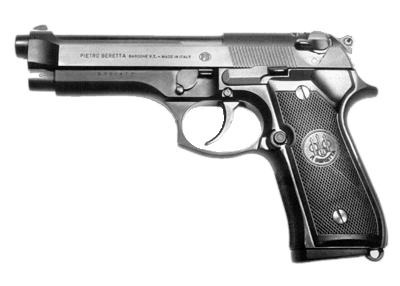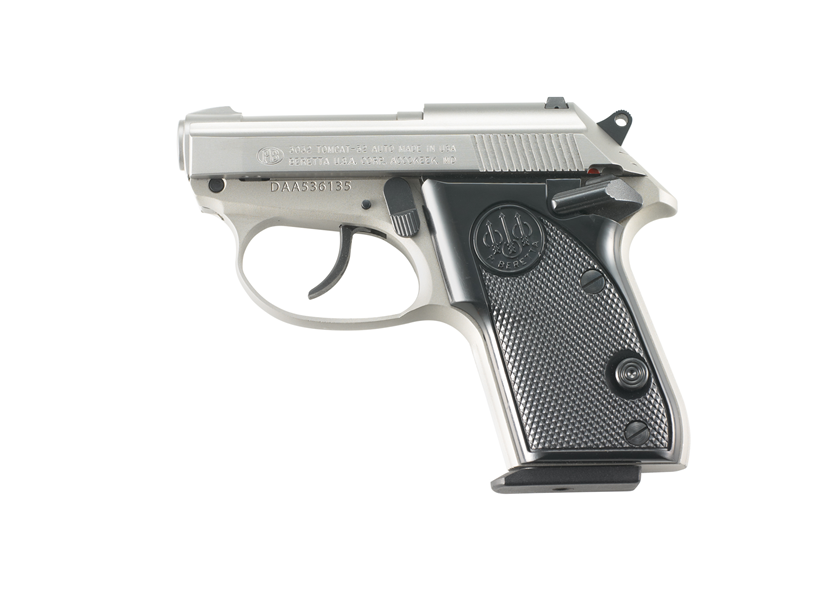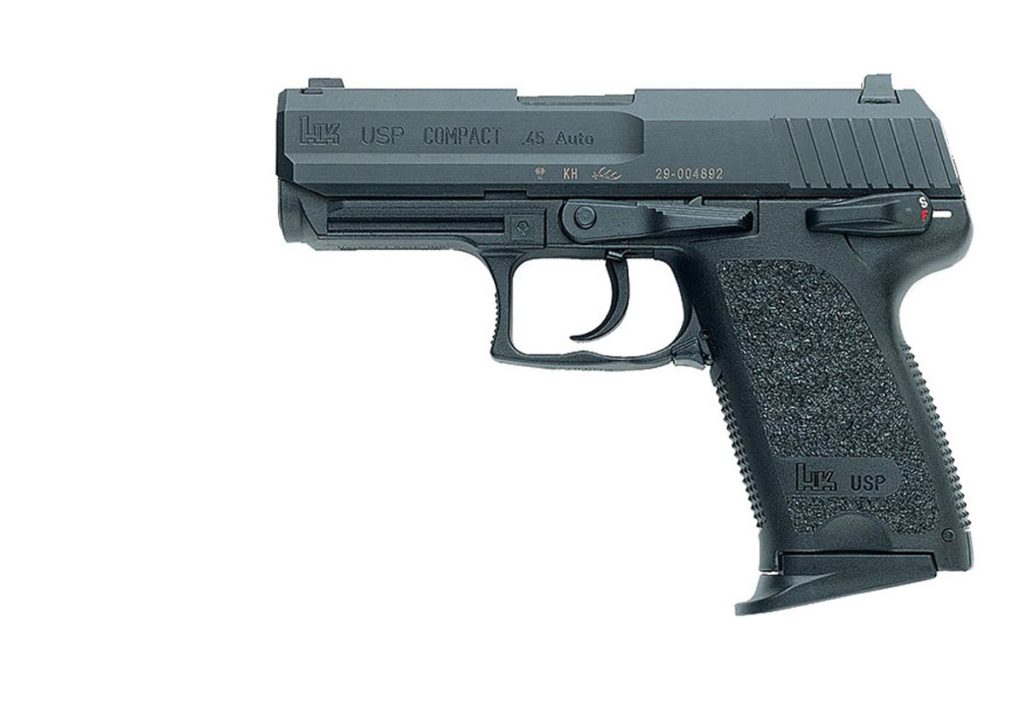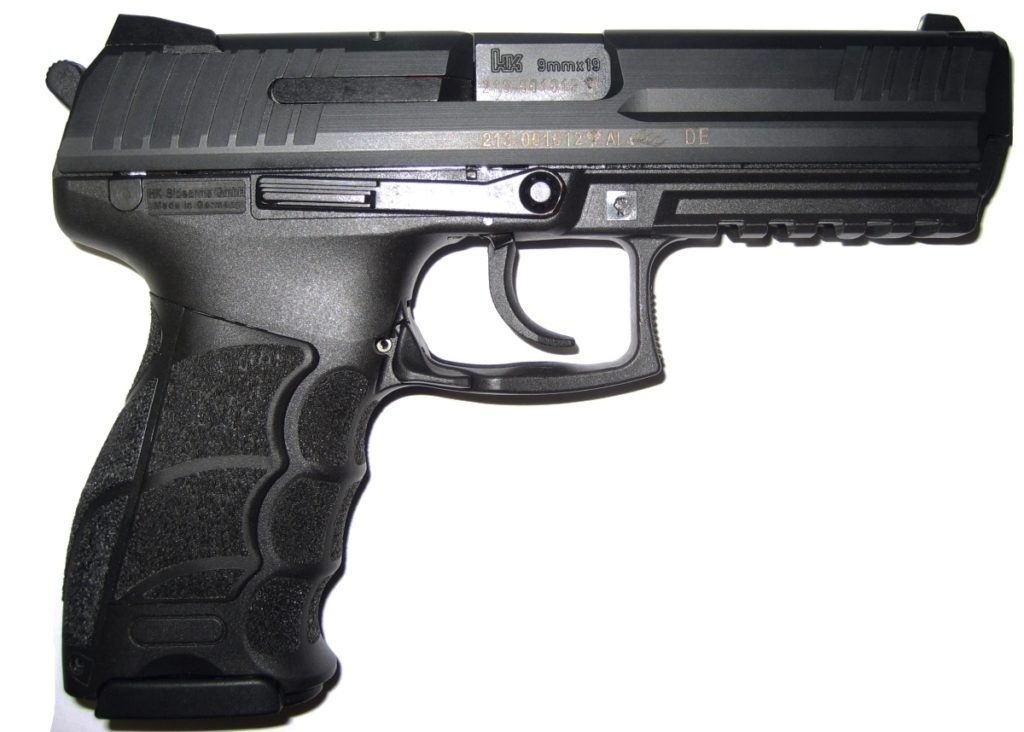I received my concealed carry license in 2001. In Michigan, that was about the earliest it could be obtained unless you had some serious connections that caused the gun board to vote for you. This means I’ve been a concealed carrier for 17 years, and diligently carry wherever possible.
In that time, I’ve learned quite a bit about what makes a good carry gun for me and my lifestyle. In parallel, the nation has become more shall-issue state to state, causing the gun industry to ramp up selections for this enthusiastic market segment.
This article really deals more with rationale, experiences, and evolving needs and understanding than it does with grams, muzzle velocity, and technical stuff. Sure, a lot of that helped make the choices of carry guns, but very few people hold up a spec sheet side-by-side and pick solely off that.
My first carry gun: the Beretta 92 FS
This was actually my first pistol purchase made 10 years earlier, and was not purchased with the intent of a CPL-intent sidearm. It was a range gun, and I liked the looks, I liked the heft, and I liked that it was the military M9 with associated testing to verify it. When my little blue card arrived letting me know that my right to carry had been purchased back from the government, it was the only handgun in my collection suitable.

When most people think of concealed carry, the full framed Beretta 92 FS does not come to mind. It’s big, it’s bulky, the grip is thick, the slide is long. It is everything that a carry gun shouldn’t be… except reliable, accurate, manageable. Wait…
As a first carry gun, its mass was rather daunting. Coupled with concealed carry being a new thing in Michigan as well as me being a new carrier, I was certain this near-anvil chunk of metal was printing wildly on my side and causing my gait to list to port (I’m a lefty). Truth is, people are oblivious and I wasn’t printing hardly at all. The mass, though… That got me to thinking about something smaller. Much smaller.
My second carry gun: the Beretta 3032 Tomcat Inox
As much as I loved the Beretta 92 FS, I decided to stick with the brand for my next purchase. Keep in mind this was about 2002 and the huge array of concealed carry pistols were not out yet.
I caught some major grief from some friends at this choice, most from one particular friend that held the attitude that if it was not a Colt 1911 45ACP it was not actually a firearm. To him, this pistol was a sissy gun, and a weak sissy at that. To me, it was a relief from the very heavy 92 FS, the ability to concealed carry practically anywhere without fear of printing, and most importantly, a means to always have a firearm on me, whether dressed up, regular clothes, or in a pair of shorts while getting a Slurpee after mowing the lawn.

My argument was a 3032 Tomcat on my person was more powerful than a 45 in the dresser back home. I wasn’t wrong in this assessment, but the 32 ACP had some issues in the power department, and trusting one’s life to such a small caliber wasn’t the wisest thing out there.
At the time, 380’s were the compacts of choice, but coming off the 92 FS I wanted something more subcompact. I eventually sold this gun to fund my next concealed carry purchase…
The Heckler and Koch USP Compact 45
This gun was a dream come true. It was the sweet spot between the big ole 92FS and the small 3032. It was a beefy caliber. It shot like a dream, and the recoil was more of a long shove than a jumpy abrupt kick.
With the two magazine choices, I had the better feeling extended magazine and the shorter flush one, making this a great gun to take to the range and a comfortable one to shoot as well as carry.

The day comes when we all realize that the class to get the dumb blue card ill-prepared us for an actual altercation. For me, this day came in summer of 2004 during a traffic altercation. Another motorist decided he didn’t like my driving, and chose to express himself with the threat of violence.
I was fortunate to have been carrying that day, as I was in my old Jeep with no top and no doors and traffic was going nowhere. I was pinned in. Fortunately, the presence of the firearm proved to be enough of a visual deterrent that he followed orders to drop his baseball bat that he articulated he was going to kill me with and move on with his day. Needing training was now on my mind.
Later that year, I was winter camping solo and encountered a pack of wild dogs. Their modus operantdi seemed to include growling at people until they threw them food, watch as they scurried off, and then eat food. (I learned this later from some backpacking forum posts for that area.) Since I only had freeze dry, and I was not about to set up camp to entertain a pack of wild dogs while I prepared their lunch, the need to defend myself was evident. I drew the USP Compact 45, and put one right in front of what appeared to be their leader. This scared them off for a time, and effectively ended my trip since I didn’t want them coming back while I was set up and possibly sleeping.
Getting some training
The next Spring I resolved I would get some training from a legitimate source. I managed to find that training and took a Handgun I and Handgun II course with round counts of 350-400 per day. This was common round counts in the pre-Sandy-Hook days of training. Classes had many drills with high reps per drill. It was here I realized that as much as I loved my 45, ammo costs for training were prohibitive.
To solve this issue, I took the training with my Beretta 92 FS. It may seem counter-intuitive to not ‘train like you fight’, but I felt it was more important to get the knowledge in a way I could afford rather than wait. I also took copious notes and trained in my 45 with those drills as I was able to afford.
Some big take aways were:
Ammunition capacity: With a loaded 92FS and 2 spare magazines, I had 46 shots available. With the USP Compact, I had 25 rounds. Nearly half.
Shooting dynamics: Anyone that says “I carry 45 because I only need to shoot once” is either really, really good, or they are a stupid idiot. Odds are generally on the latter. In an altercation, with all the stressors of conflict, the overload of senses, the worrying you’re doing the right thing, the determination this is last resort, the moving, potential bullets coming your way, trying to get cover, etc., you really aren’t going to hit what you’re aiming at unless it’s very close. Or unless you’ve really trained hard. Capacity becomes your friend so you don;’t hear the dreaded ‘click’ on an empty mag.
After this training, I started to realize that the USP45C might not be the best choice. During the next couple years, strides in cartridge advancement started to close the 45 vs 9mm performance gap. After nearly a decade with the Heckler and Kock USP Compact 45 as my primary carry gun, it was time to make the transition.
The Heckler and Koch P30
The P30 in 9mm is the perfect firearm for the left handed. Ambi mag release, ambi slide lock lever, no external safety. With 46 shots on body (the loaded handgun and 2 spare mags), the P30 is a phenomenal shooter.
This firearm has been my daily carry for the past 6 years. I have approximately 10,000 rounds through it with multiple classes as a student and many as an instructor myself. It has not once malfunctioned on me. It is the cold, stoic, and reassuring friend that has my back, and I have never once doubted its performance.

That being said, I’ve never shot with it particularly well, and have had great difficulty in pinning down why. I always shoot slightly low, and slightly left. This is not a trigger position thing; I’ve tried adjusting this in a controlled manner. Follow up shots are tight, but consistently off. I’ve adjusted sights, and moved point of aim to achieve acceptable results, but still fail to get the groupings that I can easily achieve on my Beretta 92 FS or my USP Compact.
Reassess Constantly
This summer, when shooting at my home range with my son, we tried a few different drills. The first was double taps. With the P30, I was regularly 8 inches apart vertically and within 2 inches horizontally. With my 92 FS, I was regularly 2 inches apart vertically and negligible drift horizontally. This was approximately 30 double taps with each, with deliberate focus on control.
My next set of drills was a 30 yard shot. No timing, no constraints other than aim and shoot. At 30 yards, I was 18 inches off center with the P30. With the 92 FS, I was a mere 4 inches off center (both were low).
My last set of drills was one handed shooting at 10 yards, no time limit. I was on target (about a 1.5 inch grouping) with 15 shots with the 92 FS. When I performed this with the P30, my grouping was 3.25 inches with 15 shots. Both are within acceptable parameters for self defense needs.
During the nearly 20 year span of concealed carry, holsters have also made great strides. The days of leather-only holsters are long gone, with many kydex and performance plastic ones on the market that make large frame pistols far more manageable and concealable than the days of yore.
My experimentation showed I was a better shooter with the 92 FS. With that knowledge, I ordered a modern holster for it. The modern holster makes the large framed pistol easily concealable, the weight manageable, and printing minimal.
My current carry
My current daily carry is my Beretta 92 FS. It has some drawbacks which I understand. It is assuredly not on the same advancement level as the HK P30, and it is still a bit big for discrete carry everywhere. Added to this is a small Glock 43, for when the full frame pistol is not an option.
Between these two, I am covered for concealability vs capacity. But both operate as intended every time I ask. I shoot well with them both, and both serve their purpose.
Educated shooters will wonder Whiskey Tango Foxtrot at my choice, and they are certainly within the realm of reason to do so. But the gun is one part of the whole system, and with me as part of that system, the 92 FS seems to perform better. For me.
Honest assessment.
